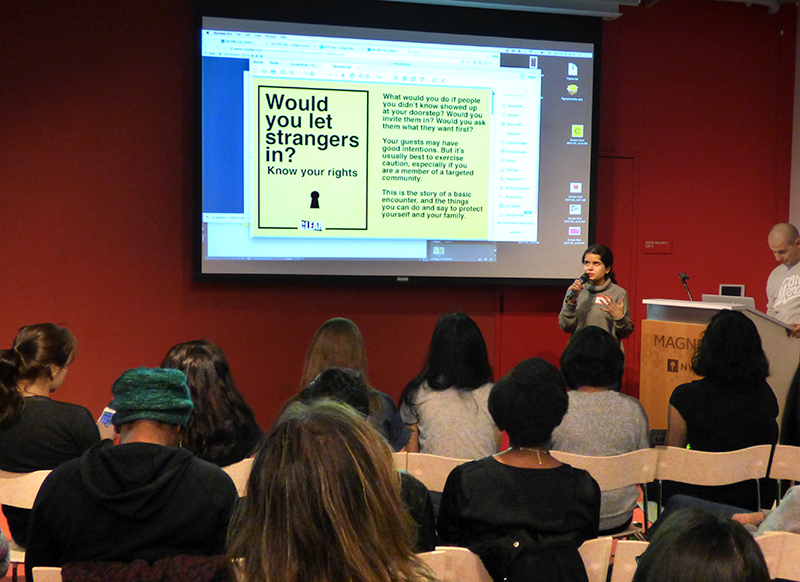Techies ‘Hack the Ban’ for undocumented immigrants in Brooklyn

After Saturday’s all-day “Hack the Ban” hackathon, Naz Ahmad displays material created for a legal project aiding immigrants. The material was created for CUNY CLEAR, based out of the City University of New York School of Law. Photo by Mary Frost
As home to thousands of immigrants and an increasing number of technology professionals and creatives, it was only a matter of time before the groups got together in Brooklyn.
On Saturday, tech and media pros came to the aid of groups representing undocumented immigrants at an all-day hackathon held at NYU’s Tandon School of Engineering at MetroTech.
It was part of an outpouring of support for those affected by President Donald Trump’s executive order affecting immigrants and refugees from seven mostly-Muslim countries, along with an uptick in raids by U.S. Immigrations and Customs Enforcement (ICE).
